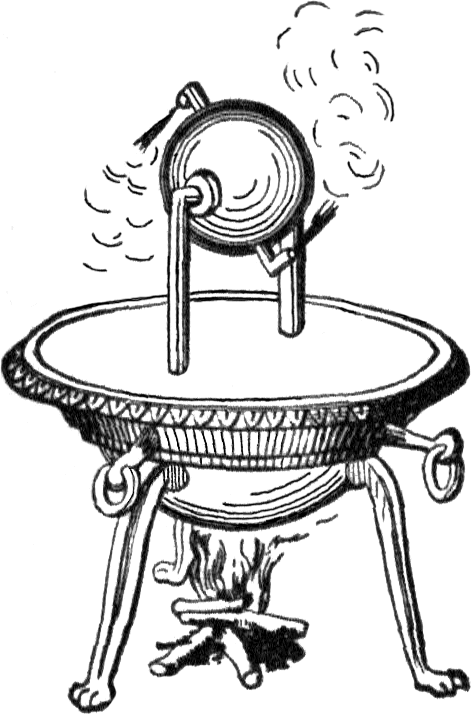
Today is the solstice. It’s summer – in some parts of the world – perfect weather for enjoying a cold drink on a hot day. Chances are that beverage, and its glass, were brought to you by steam. Brewing craft beer, sterilizing dental or medical instruments, cooking, heating – all these activities require steam. Fossil fuels power 73% of energy in the United States: 40% is used to make steam. Usually produced by boilers, powered by coal, gas, or oil, the industry standard could soon change.

Transitioning to a new energy source often requires installing new, expensive infrastructure – think electric vehicles and charging stations. But if the same infrastructure could be used, phasing out and phasing in could be seamless. That is the case with emerging technology of green steam, A similar advantage can be found in biofuels for aviation: sustainable aviation fuels can be pumped into jet aircraft now using fossil-based kerosene. Saving costs of building new infrastructure, saving costs of removing old systems, saving jobs by keeping the same personnel, and saving energy – it is a win worth getting steamed up about.

The first steam engine, called the aeolipile was described by Vitruvius who also wrote about the Roman Aqueducts. In 1712, Thomas Newcomen, said by some to be the progenitor of the Industrial Revolution, invented an atmospheric engine powered by steam – it pumped water out of coal mines, thus advancing the use of coal for energy. Since Newcomen, steam has been made by burning coal, or other fossil carbon-based fuels.
Enter Spirax Sarco. The UK-based powerhouse is testing a zero-carbon boiler for a food manufacturer. The food and beverage industry produces 11% of the world’s greenhouse gases – same as the total emissions for Belgium. The food and beverage industry contributes $412 billion to the U.S. economy. In the EU, the industry employs 4 million people. Developing zero carbon steam technologies for this industry will help to meet global climate goals.

Steam didn’t need to be invented. It has been a product of the Earth longer than humans have been on the planet. Visit Iceland and you’ll see steam rising from the geysers. Steam uses water: in a drought-threatened world, more efficient steam can save water and reuse this critical resource. Beer brewing is one example of using water and steam, with a few other ingredients. The beverage is so traditional it is made by the monks of the Abbey of Our Lady of Saint-Remy, Belgium, a Cistercian Order of Strict Observance. You can’t enter the monastery, but you can toast with their beer, made by traditional processes.

Enter AtmosZero. The US-based start-up company that just received Series A funding by Engine Ventures along with backing by Constellation Energy Corporation, Energy Impact Partners, Starlight Ventures, and AENU, is developing a boiler driven by heat pump technology. The U.S. Department of Energy awarded AtmosZero a $3 million grant for Industrial Efficiency and Decarbonization. The innovative Boiler 2.0 is a “drop-in” system that can replace carbon fossil-fueled equipment. The system generates two times more heat than its energy input. An early adopter and beta-tester: New Belgium Brewing, a craft beer company in Colorado. Cheers!

More:
AENU. https://www.aenu.com
AtmosZero. https://atmoszero.energy
Brooke, K. Lusk. “TRANSPORT: New ‘Wingprint’ for Aviation.” 29 November 2023. Building the World Blog. https://blogs.umb.edu/buildingtheworld/2023/11/29/transport-new-wingprint-for-aviation/
Constellation Energy Corporation. https://www.constellationenergy.com
Energy Impact Partners. https://www.energyimpactpartners.com
Engine Ventures. https://engineventures.com
National Museums Scotland. “Thomas Newcomen’s Steam Engine.” https://www.nms.ac.uk/explore-our-collections/stories/science-and-technology/newcomen-engine/
New Belgium Brewing. https://www.newbelgium.com
SpiraxSarco. https:spiraxsarco.com
Starlight Ventures. https://starlight.vc
Vitruvius. De Architectura. https://penelope.uchicago.edu/Thayer/E/Ronan/Texts/Vitruvius/home,html
Winrow, Michael. “Why green steam is a hot issue for business.” 25 April 2024. BBC.com. https//www.bbc.com/news/business-68687140
Building the World Blog by Kathleen Lusk Brooke and Zoe G. Quinn is licensed under a Creative Commons Attribution-NonCommercial-NoDerivs 3.0 U
